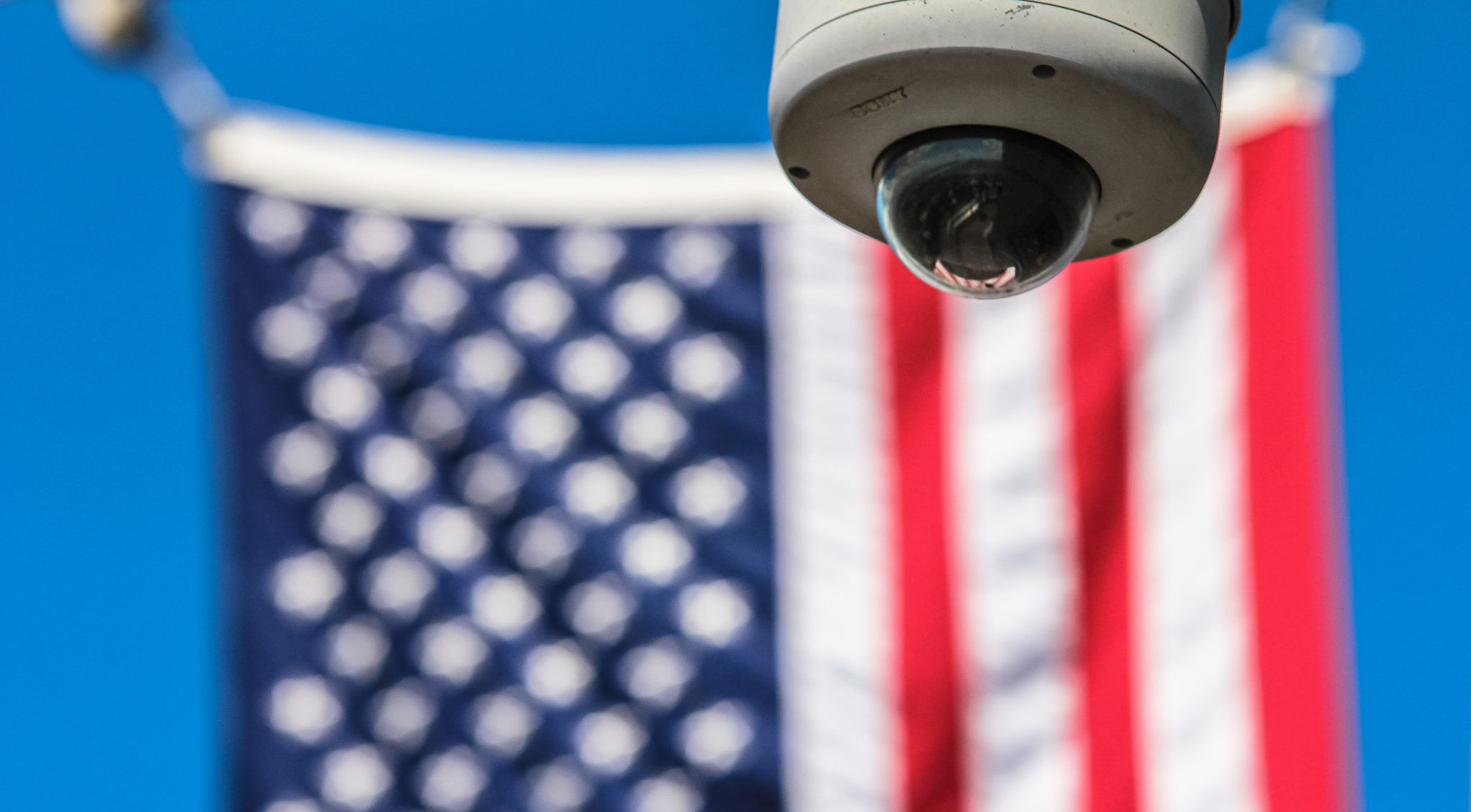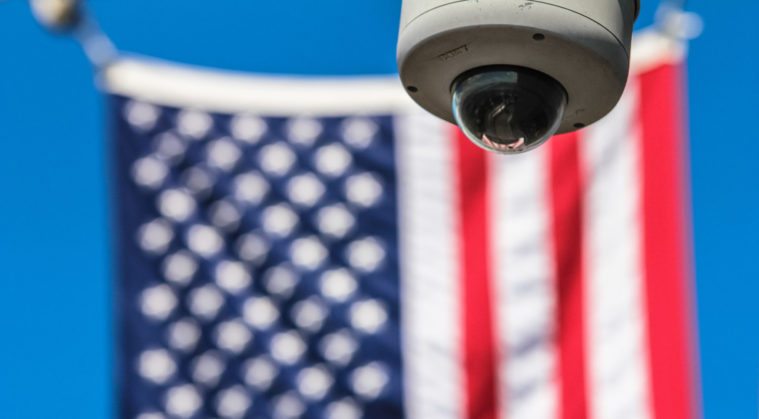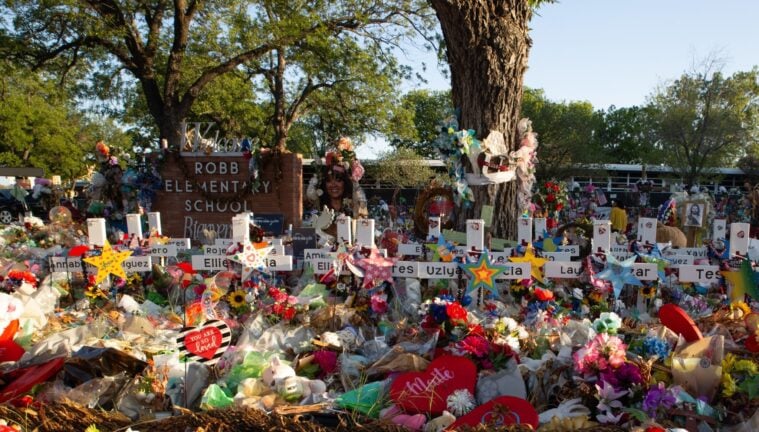
‘Under Surveillance’ Author on the Hidden Costs of Being Watched
Randolph Lewis’ new book focuses on the “soft-tissue damage” caused by living in a surveillance state.


There’s a moment in Under Surveillance — Randolph Lewis’ accessible, ruminative, anxiety-ridden new book on American surveillance culture — when the author travels to Walden Pond. He’s come in search of the same pastoral refuge that drew Henry David Thoreau, but instead he hears helicopter blades thumping overhead. Most of his fellow visitors are staring at their iPhones, and the walking trails are marked with barbed wire. While Lewis is careful not to romanticize the past, he concludes that all this technology “would surely grate on Thoreau’s nerves.” Even in a place symbolic of American wilderness, people are playing Angry Birds, which “the NSA surreptitiously mines for clues about its millions of users,” and posting their location on Instagram in the very spot where Thoreau watched ants. What’s the world coming to?

By Randolph Lewis
University of Texas Press
$27.95; 276 pages University of Texas Press
To a pretty dark place, as it turns out. In Under Surveillance, Lewis paints a bleak picture of a dystopian present in which we’ve already become numb to ever-encroaching drones, closed-circuit cameras (CCTV), all-knowing and all-powerful tech companies, and the fast-growing surveillance industry. “I fear that we’re building a gaudy Las Vegas of the mind, a slick zone of mechanized distrust in which we’re always under someone’s watchful eye,” writes Lewis, who is a professor of American studies at the University of Texas at Austin. The book focuses on what Lewis calls the “soft-tissue damage” caused by surveillance — how it’s changing the way we feel and think. He spoke with the Observer about “perveillance,” drones over the border and the church security industry.
What were some of the most surprising or egregious examples of surveillance technology that you found?
I set up Google Alerts, and it quickly became overwhelming how many new things come out every day. Yesterday it was digital pills that send notifications to the doctor that you took your medication. Those are really profound, to be surveilled inside your body. A lot of them are the internet of things: video game consoles, smart TVs that record everything we say, and other stuff in our houses. It really shocks me how much surveillance we invite into our homes in the name of convenience, and we’re either naive about the risks, or just too overwhelmed to consider them.
You introduce the concept of the Funopticon, or the lighter side of surveillance — from hobby drones to surveillance cameras designed to look like cuddly animals. Why did you want to write about how surveillance can be fun?
The Panopticon, from Foucault, was the dominant metaphor in surveillance studies in the last 100 years — thinking about how we’re going to internalize the gaze of the warden in all these senses. It’s a powerful metaphor, but it tends to be deployed in a sinister, scary, Orwellian way. And I was looking for a way to account for the lighthearted, voyeuristic and sexual side of surveillance. What do you do with the fact that people like to download apps that let them see random CCTV footage from around the world?
So much of surveillance culture is driven by men looking at women in objectifying ways, sometimes called “perveillance.” For example, a lot of casino CCTV operators and shopping center parking lot operators are young men who are using the equipment maliciously as a form of sexual harassment. There’s pleasure in there, and some of it’s dark and disturbing.
I thought that was one of the creepiest parts of the book. It’s an example of hidden surveillance, something we never think to worry about.
There’s this incredible scholar from Finland named Hille Koskela who’s written a lot about gender and surveillance. She found that some of these cameras are used more for ogling than for security [by a 5-to-1 margin].
“Psychologically, it feels good to put tape over my webcam, but I know my mic can still be activated remotely.”
I’m curious what you have to say about the U.S.-Mexico border and surveillance. You write that Border Patrol drones have already been used to track and arrest U.S. citizens in rural areas — a rancher who stole six cows, for example. Can you talk more about that?
I would say two things. One is that drones from Afghanistan are being used over the border, and [they’re also] covering a huge percentage of the domestic United States, not just the border. So we’re now seeing mission creep in the use of drones.
The second thing is that during Rick Perry’s governorship, we had the Texas Virtual Border Watch, and volunteers were watching through CCTV cameras. Before [the idea of] Trump’s wall, we had a virtual wall, and it was wildly ineffective for lots of reasons, but it goes back to this idea of entertainment and surveillance. People were watching the footage in bars in Australia as entertainment: “Look, there goes somebody crossing the Rio Grande!” I just find that so disturbing. I’m not blaming the Australian in the bar, I’m blaming the state of Texas for setting up such a cruel and ineffective measure.
You write about the “sacred security” industry, which sells measures like CCTV cameras, threat assessment training and even bulletproof Bible-holders to pastors.
If you own a church and you’re worried, there are companies who court mostly Evangelical and fundamentalist churches and offer training sessions and equipment. Then you have people at the front door who are greeters doing threat assessment, you have cameras over the altar and you have a sense of securing the perimeter. The people I met [at a sacred security conference] were very well-intentioned, conservative white men over 40 who have a traditional, patriarchal sense of gender roles. For them, the militarization of the church is a way to fulfill their role as protectors.
What’s shocking to me is these companies think al-Qaida is casing their church in the suburbs. And I’m not talking about megachurches, but smaller churches. The level of fear really shocked me. It surprised me that white Christian people in small-town America would be so scared. But there is a kind of language of victimhood or oppression that they trade in. And even in training sessions, they admit the surveillance technology can’t protect you from the top risk of violence in a church, statistically, which is linked to domestic violence, as we saw in Sutherland Springs.
Surely that shooting and others like it will only fuel the industry.
In Sutherland Springs, as in Las Vegas, you can put in as many cameras as you want and it doesn’t deter these spectacular acts of violence. It may be useful in an evidentiary sense later on, but it’s completely foolhardy to put them in as a deterrent. We could take a lesson from these tragedies: that there’s nothing surveillance technology could do to prevent them from happening. I just find it incredibly depressing for democracy to have yet another agreement where facts don’t matter, logic doesn’t really matter and it’s really about emotion and fear.
Do you believe that Americans have too easily resigned themselves to constant surveillance? What should we do differently?
To the first part — yes, emphatically yes. As for what to do differently, that’s really hard. It’s an educational process that takes time. We’re just so seduced by the language of security that comes out of our political culture, since 9/11 especially, and then there’s commercial pressure, parenting pressure and glorification in the media of surveillance technology. It makes it really hard to feel empowered enough to decide for yourself. Psychologically, it feels good to put tape over my webcam, but I know my mic can still be activated remotely.
You teach undergraduate students at UT-Austin. Is their attitude toward surveillance different than your own?
They’re split. When I talk to students, some of them are completely blasé about it, and others are pretty savvy and do worry and act with the knowledge that whatever they say online will never go away. I think this is the greatest unanswered question in surveillance studies right now — what the next generation will make of growing up observed.
This interview has been edited for length and clarity.


